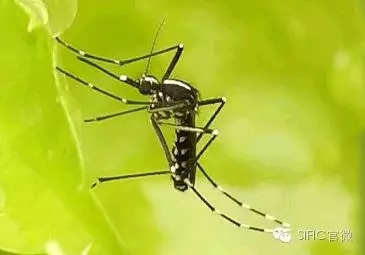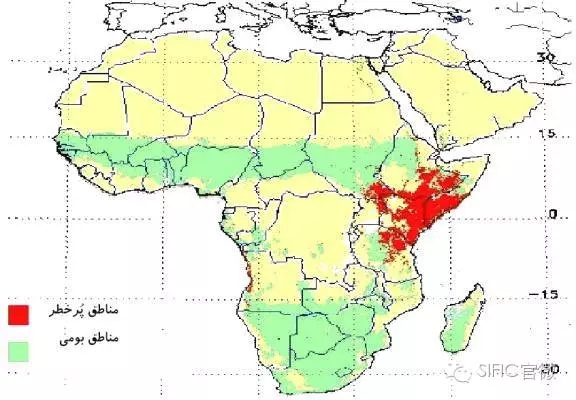根据目前的医学模式,传染病的预防中,对病人的管理必须做到“五早一就”,从而做到传染病发生后防止其传播、蔓延。其中五早为:早预防、早发现、早报告、早隔离、早治疗。然而,在埃博拉扥新发传染病面前,五早管理原则显得苍白无力!非官方统计,目前70%左右的新发传染病为人畜共患病,原来只在动物之间传播的病毒因为基因变异而传播给人类,例如几年前的禽流感,去年的MERS、埃博拉,无不对人类的健康造成严重的威胁。“前瞻性”传染病医学模式的需求越来强烈,随着基因诊断技术的发展,梦想不再是梦,传染病可以真正做到防范于未然!
布鲁克·哈蒙是桑迪亚国家实验室的一位病毒学家,他领导研究发现裂谷热病毒感染的细胞通路,为该高度传染性和致命性疾病开发治疗方案迈出了第一步。资料由桑迪亚国家实验室的黄兰迪提供。
从字面上——病毒不能没有我们,为专性寄生物,病毒需要依赖宿主细胞来生存和生长。科学家们利用这个特征通过关闭病毒感染的必要途径来开发治疗方法,从实质上阻止病原体传播。裂谷热病毒(RVFV)和布尼亚病毒科的其他成员可能很快就会被添加到拒绝进入人类宿主的病毒名单中。桑迪亚国家实验室的研究人员已经发现了RVFV劫持宿主机体造成感染的机制。这种机制提供了针对该种致命病毒开发治疗方案的新方法。这种病毒在人类严重感染时会引起致命肝炎合并出血热、脑炎和视网膜血管炎。

最近发表在《病毒学杂志》上的一篇论文报道了他们的成果,题目为 《全基因组RNAi筛选识别Wnt/β-连环蛋白信号通路在裂谷热病毒感染的作用》。这项工作是由桑迪亚实验室指导研究和发展项目提供资金。在此之前,布尼亚病毒与宿主细胞之间的相互作用的基本感染机制了解甚少。在桑迪亚病毒学家布鲁克哈蒙的带领下,研究人员发现了Wnt信号是布尼亚病毒感染的关键。
Wnt信号通路,调节关键细胞加工,如增殖、分化,已经在医学研究人员大量的调查中,因为它与乳腺癌、黑色素瘤、前列腺、肺癌、卵巢癌和其他癌症和II型糖尿病相关。临床试验正在针对Wnt通路进行癌症治疗。
哈蒙说:“我们可以利用治疗癌症的方法,因为这条通路的抑制剂已经开发用于多种种癌症。由于那些疗法的运用已经通过临床试验,我们可以将它们应用于传染病。”
“裂谷病毒能与一些最险恶的结合为一种病毒,例如埃博拉病毒和寨卡病毒。”哈蒙解释道。“像埃博拉病毒,它可以引起出血热和感染,从而在几天内丧命。像寨卡病毒,它是由蚊子传播的,在人类中会引起神经系统疾病,并且在牲畜间会导致频繁的流产和胎儿畸形。”
如今裂谷热病毒主要影响动物,尤其是牲畜。何蚊子传播的大多数病毒一样,裂谷热病毒主要在野生动物之间传播,但有可能蔓延到人类,类似于禽流感和西尼罗河病毒。
哈蒙和桑迪亚研究员奥斯卡纳格力特从大约五年前开始利用高通道RNA干扰并从全部人类基因组筛选出裂谷热病毒的易感基因。研究人员寻找病毒感染的必要基因,这意味着病毒不能感染缺失该基因的细胞。
在加州大学伯克利分校进行初步帅选,然后在桑迪亚进一步筛选,他们将范围缩小到381个嫌疑基因。纳格力特说:“当我们按功能聚合那些基因,我们发现Wnt通路是最具代表的。”
纳格力特说,下一步是进一步研究感染的机制。研究人员还计划利用RNA干扰的补充——短回文重复序列,去寻找其它裂谷热病毒感染机制。这种认识可以为设计有效的宿主定向抗病毒疗法提供帮助。
哈蒙说:“我们不断追逐这些病毒!就像寨卡病毒暴发发生时,我们只能疲于寻找治疗方法。所以我们需要在下一次重大传染病爆发前找到退路,因为从最近的历史了解到,致命性疾病可能迅速从动物传播到人类,并在疫区外进行传播。如果有裂谷热病毒或另外一种布里亚病毒暴发,我们希望在仓库已经有准备应对的药物。”

裂谷热在非洲的分布(草绿色为感染区,红色标记日期为首次发现时间)
爱学习的都会看英文原文Brooke Harmon, a virologist at Sandia National Laboratories, led research that found a cellular pathway for Rift Valley fever virus infection, the first step in developing treatment for the highly infectious deadly disease. Courtesy of Randy Wong, Sandia National Laboratories
Viruses can't live without us -- literally. As obligate parasites, viruses need a host cell to survive and grow. Scientists are exploiting this characteristic by developing therapeutics that close off pathways necessary for viral infection, essentially stopping pathogens in their tracks. Rift Valley fever virus (RVFV) and other members of the bunyavirus family may soon be added to the list of viruses denied access to a human host. Sandia National Laboratories researchers have discovered a mechanism by which RVFV hijacks the host machinery to cause infection. This mechanism offers a new approach toward developing countermeasures against this deadly virus, which in severe human infections causes fatal hepatitis with hemorrhagic fever, encephalitis and retinal vasculitis.
The results are reported in a paper, "A Genome-Wide RNAi Screen Identifies a Role for Wnt/Beta-Catenin Signaling During Rift Valley Fever Virus Infection," recently published in the Journal of Virology. The work was funded by Sandia's Laboratory Directed Research and Development program.
Little is known about the fundamental infection mechanisms and interactions between bunyaviruses and their host cells. Led by Sandia virologist Brooke Harmon, the researchers discovered that Wnt signaling is essential for bunyavirus infection.
The Wnt signaling pathway, which regulates critical cell processes, such as proliferation and differentiation, is already under heavy investigation by medical researchers because of its association with breast, melanoma, prostrate, lung, ovarian and other cancers and with Type II diabetes. Clinical trials are underway for cancer treatments targeting the Wnt pathway.
"We can take advantage of the work on cancer therapeutics. Inhibitors of this pathway are already being developed for several cancers. As those therapies move through clinical trials, we can apply them to infectious diseases," said Harmon.
You may not have heard of RVFV, but it's a familiar threat to anyone working in infectious diseases. The National Institute of Allergy and Infectious Diseases lists RVFV as a category A priority pathogen, meaning it poses the highest risk to national security and public health.
"Rift Valley combines some of the most sinister aspects of both Ebola and Zika into one virus," explained Harmon. "Like Ebola, it can cause hemorrhagic fever and be lethal within days of infection. Like Zika, it's transmitted by mosquitoes, can cause neurological disease in humans, and results in frequent miscarriages and fetal deformities in livestock."
Today RVFV predominantly affects animals, livestock in particular. Like most viruses transmitted by mosquitos, RVFV circulates predominantly in wild animals but has the potential to spill over into human populations, similar to avian influenza and West Nile virus.
While endemic to Africa, RVFV has spread to the Arabian Peninsula and has the capacity to emerge into further territories. Since the late 1990s, large-scale RVFV outbreaks in eastern and southern Africa, Mauritania, Saudi Arabia and Yemen have severely affected the health and economy of tens of thousands of humans and infected hundreds of thousands of livestock.
Harmon and Sandia researcher Oscar Negrete began the project about five years ago by using high-throughput RNA interference to screen the entire human genome against RVFV. The researchers looked for genes that were required for virus infection, meaning that the virus cannot infect cells missing that gene.
From that initial screen, conducted at the University of California, Berkeley, and further screening at Sandia, they narrowed the field down to 381 genes of interest. "When we functionally clustered those genes, we found that the Wnt pathway was the most represented," said Negrete.
To test their hypothesis that the Wnt pathway is critical to RVFV infection, the researchers tested a vaccine strain of the virus. When those results supported their theory, they conducted the same experiments on wild type virus in a Biosafety Level-3 laboratory at Lawrence Livermore National Laboratory.
They expanded the testing to other members of the bunyavirus family like La Crosse virus and California encephalitis virus and found the same results. "This was somewhat unexpected because divergent bunyaviruses typically have their own unique features of infection. The fact that they shared this same pathway is exciting because it indicates Wnt signaling may be necessary to the virus family as a whole," said Negrete.
The next step, said Negrete, is to further investigate the mechanisms of infection. The researchers also plan to look for other mechanisms of RVFV infection using CRISPR, or clustered regularly interspaced short palindromic repeats, which is complementary to RNA interference. This understanding can aid in the design of effective host-directed anti-viral therapeutics.
"We keep chasing these viruses. An outbreak like Zika happens and that's when the push begins for a therapeutic. We need to get out in front of the next big one because recent history has taught us that deadly diseases can rapidly spread from animals to humans and beyond endemic zones," said Harmon. "If there is an outbreak of RVFV or another bunyavirus, we hope to already have something in the arsenal."
Source: DOE/Sandia National Laboratories




 上传视频拿金币,快来上传你最喜爱的感控相关视频吧!#👈点我了解详情#
上传视频拿金币,快来上传你最喜爱的感控相关视频吧!#👈点我了解详情#





